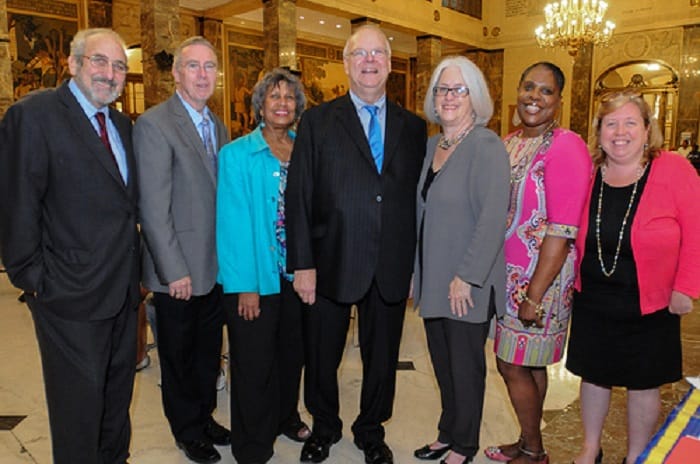The Alliance for Retired Americans essay
The Alliance for Retired Americans (ARA) is an effective nonprofit, nonpartisan organization specially developed for retired trade union members. The ARA was founded in 2001. This organization is connected with two other organizations, namely the American Federation of Labor and Congress of Industrial Organizations (AFL-CIO) and the Change to Win Federation (CtW). It also includes non-union and community-based members. The predecessor of this organization was the National Council of Senior Citizens (NCSC). According to statistical data, in 2012, the ARA had more than 4 million members in the United States. The ARA has developed effective programs, which operate in 33 states.
The ARA is considered to be a nationwide organization as it addresses the issues of concern at the national level. According to the information presented on the official website of the organization, for 13 years, the ARA “has enrolled and mobilized retired union members and other seniors and community activists into a nationwide grassroots movement advocating a progressive political and social agenda that respects work and strengthens families” (The Alliance for Retired Americans, Official Website, 2014).
The ARA office is headquartered in Washington D.C.
Membership
The ARA involves retired seniors of the United States, as well as different community activist groups, which are focused on addressing the issues of public concern regarding the aged. For example, the members of this organization may voice the discrepancies found in public policies that may have a negative impact on American seniors. Membership in the ARA can be defined broadly because the ARA includes the members of NCSC, who became the members of ARA automatically. Today the ARA invites retired union members from all parts of the United States. At the same time, the ARA invites the retired workers who have never been union members. The ARA’s dues are not too high, only $10 a year for a retired union member. According to the national convention, the ARA membership organizes meetings every non-presidential election year in order toparticipate in the election of the governing board members: a President, a Secretary-Treasurer, an Executive Vice-President, and six Board Members.According to the established rules and regulations, every member of the ARA has the rights to attend the national convention as well as to use his/her voting right. The funding unions have the right to send their selected delegates. The membership is responsible for providing the discussion of policies, in order to approve the most effective ones. Besides, the membership is responsible for solving various issues connected with voluntary donations for the organization’s political and social activities (Binstock 267).
Funding
As the ARA’s predecessor was NCSC, it is necessary to refer to its history, which tells much about funding. During the 1960s -1970s, NCSC was funded by the federal funds, according to the Older Americans Act. Title V of the Older Americans Act provided opportunities for funding part-time employment for under-employed seniors. Today the ARA is a sponsor of Educational Fund, which is focused on research work and production of publications on public policies (Hillier & Barrow 23).
Governing Board
The governing body of the ARA includes the selected members of the organization. The ARA is governed by the members of the national executive board, which includes six community-based directors and six directors appointed by the affiliated unions (The Alliance for Retired Americans, Official Website, 2014). The Governing Board includes:
- The ARA President: Barbara Easterling. She held the position of the Secretary-Treasurer of the AFL-CIO.
- The ARA Community-Based Executive Director: Richard Fiesta. He served at the Departments of Labor and the Interior and the Pension Benefit Guaranty Corporation.
- The ARA Secretary-Treasurer: Ruben Burks. He was a Secretary-Treasurer of the United Auto Workers.
- The ARA Executive Vice-President: Jo Etta Brown. She was a leader of the Alliance for Retired Americans Community Advocacy Network.
- The ARAExecutive Vice-President: Liz Shuler. She served as a Secretary-Treasurer of the AFL-CIO (The Alliance for Retired Americans, Official Website, 2014).
The major goals of the organization
The major goal of the ARA is to give American seniors a sound and reputable voice nationwide, as well as within their communities. The ARA is focused on the organization of the effective advocate groups in order to lobby on the major legislative issues associated with the aged, including Medicare, Social Security, long-term care insurance reform plans and affordable housing benefits. Actually, the mission of the ARA is to “ensure social and economic justice and full civil rights for all citizens so that they may enjoy lives of dignity, personal and family fulfillment and security” (The Alliance for Retired Americans, Official Website, 2014).
The ARA members are active participants of the polls. They effectively use their membership rights to educate other seniors of new policies and mobilize them to take an active part in elections of the leaders, who are“committed to improving the lives of retirees and older Americans” (The Alliance for Retired Americans, Official Website, 2014). Special attention is paid to social programs, including Social Security and Medicare. For example, in 2013, the ARA members created Human Chain Against the Chained CPI events in more than 50 cities in order to stop the cut and earn Social Security benefits (The Alliance for Retired Americans, Official Website, 2014). In addition, the ARA members managed to block the privatization of Social Security using the ARA’s Social Security “Truth Truck”. The ARA provided more than 2.1 million petitions to the US Congress (The Alliance for Retired Americans, Official Website, 2014). In general, the ARA helps current retirees to succeed in protecting their rights.
Do you like this essay?
Our writers can write a paper like this for you!



